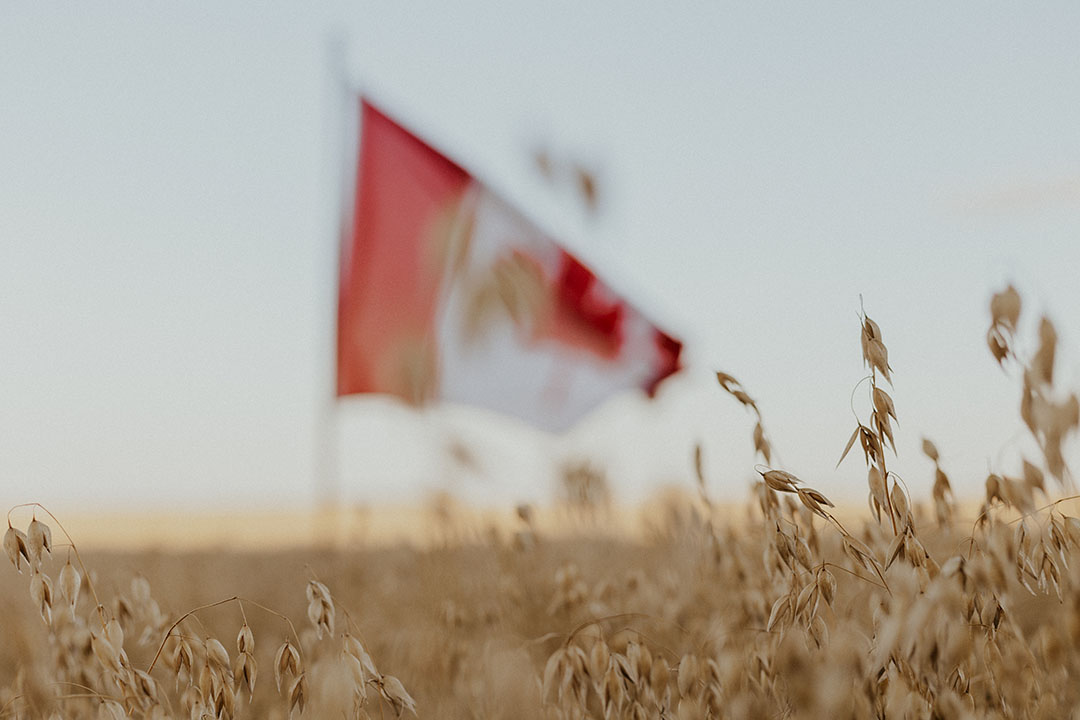
GIFS at USask study shows Prairie farmers producing lowest carbon intensity barley and oats
A new comparative carbon footprint study of barley and oats production shows that Saskatchewan and Western Canadian farmers are producing these crops with the lowest carbon intensity relative to other jurisdictions.
The study, commissioned by the Global Institute for Food Security (GIFS) at the University of Saskatchewan (USask), compared barley and oats produced in Saskatchewan, Western Canada, Canada and international competitors – Australia and France for barley, and Australia, Finland, Poland and Sweden for oats.
“The results from our oat and barley report further reinforce the productive sustainability of Western Canada’s cropping system,” said GIFS Chief Executive Officer Dr. Steven R. Webb (PhD). “These findings are consistent with previous studies on non-durum wheat, durum wheat, canola, lentils, and field peas we announced last year. It’s a clear story of innovation—demonstrating that Canada’s advanced cropping systems continue to drive sustainable productivity.”
Comparable to earlier studies, the lower carbon intensity numbers for barley and oat production in Western Canada are driven by the widespread adoption of various innovations and farming practices employed by producers, including:
- No-and minimal till farming;
- The adoption of herbicide-tolerant canola;
- A robust crop rotation system;
- The production of nitrogen-fixing pulse crops;
- The growing adoption of innovations on the rise, such as the variable-rate application of fertilizer.
“We are pleased to see that the latest carbon footprint study from GIFS confirms that Saskatchewan producers are global leaders in sustainable production,” said Saskatchewan’s Minister of Agriculture Daryl Harrison. “This research from GIFS will help ensure that our producers remain competitive on the world stage. This is evidence that matters to global markets that are looking for products that are sustainably produced. We’re grateful to our oat and barley producers for the work they do to meet the needs of markets around the world that rely on Saskatchewan for safe, and high-quality food.”
The carbon life cycle analysis of barley and oats followed established protocol supported by global standards, including ISO 14044 and ISO 14067, and leveraged the expertise of GIFS partners at PRISM Consulting who conducted these studies. The study compiled and reviewed data on the carbon dioxide equivalent emissions for the various activities that go into crop production including transportation of field inputs, seed, fertilizer and manure inputs, emissions associated with fertilizer and pesticide manufacturing, energy emissions (from irrigation, field activities, and post-harvest work) and nitrous oxide and carbon dioxide emissions from the application of nitrogen fertilizer, lime and urea.
The study also examined the potential of agricultural landscapes to support soil-based carbon sequestration.
“Agriculture is all about carbon and these studies show that Canadian farmers can produce more good carbon with less waste, while helping us understand the impact of the innovative, practices farmers deploy on the production system,” said Webb. “This highlights the importance of approaching these studies from a systems perspective, considering the food produced, the emissions or waste generated, and the ability of the system to sequester carbon in the soil.”
The results show that whether including or excluding soil carbon sequestration, the carbon footprint to produce barley and oats is lowest in Saskatchewan and Western Canada, with the difference being more distinct when soil carbon is included.
“As the world’s population continues to increase, so does the need to create sustainable methods to feed this growing population,” said USask Vice-President of Research Dr. Baljit Singh (PhD). “The results of this study emphasize the true impact that the University of Saskatchewan and the Global Institute for Food Security have on Canada’s agricultural landscape. We have been leaders when it comes to researching and exploring innovative and sustainable farming practices and we are committed to continuing this excellent work for many years to come.”
The study demonstrates the ability to drive productive sustainability through the large-scale deployment of innovations by producers.
“We undertook these life cycle analyses to understand how crop production compares across regions, the impact of innovation on production, and to support the development of a regulatory framework that is evidence-based, follows the data and considers the whole system through a productivity lens that measures grain yields, emissions and sequestration,” said Webb. “There is always room for improvement across all production systems, and GIFS emphasizes that one size does not fit all, so the regenerative practices should be scaled to regions and account for regional differences.”
For more study highlights, including the complete publication, see gifs.ca/sustainableag.

